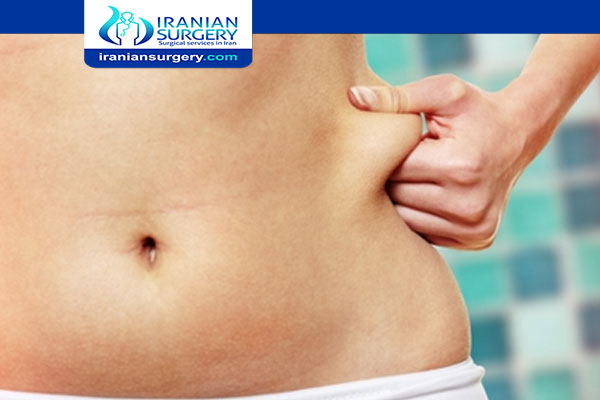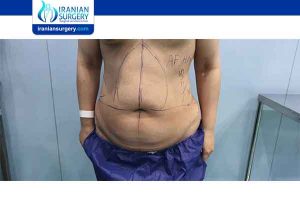How to smooth out stomach after liposuction?

How to massage lumps after Liposuction?
How to smooth out stomach after liposuction?
How to get rid of hardness after liposuction?
Some lumps or bumps can be a normal part of the healing process. In most cases, the results should resolve, and although patients may feel some contour irregularities for a period of time, the end result ideally is quite smooth. After liposuction some people experience subcutaneous lumps, ripples and internal scarring that cause the contour of the body to be uneven. One of the most important things to remember is that liposuction is surgery in which the surface below the outside of the skin is peeled away from the surface below to cause a pocket into which the cannula can go to suck out the fat.

Read more about : The German patient saved $ 14,000 by choosing Iran over Germany to have liposuction and abdominoplasty surgery.
Read more about : Is liposuction safe?
Read more about : Liposuction recovery
Lumps after liposuction are not uncommon. These lumps are more common in large areas, such as the stomach, back, and thighs. Patients may have skin irregularities (similar to extreme cellulite) for two weeks following their liposuction surgery, and this may even last for a few months.
Lumps after liposuction are more common in older people and those with poor skin elasticity. Skins with stretch marks are more prone to post-liposuction irregularities.
What causes lumps after liposuction?
The most common cause of lumps and bumps after liposuction is the accumulation of fluid under the skin, which in turn causes swelling, or inflammation. While a liposuction procedure is underway, many tunnels are created under the skin by the cannula. These hollow spaces are filled with bodily fluids, which causes irregular swelling, hence the bumpy skin surface.
These tunnels gradually collapse with the help of the compress garment, which presses the skin down and helps it settle down and fit the underlying musculature.
In some cases, bumpiness might be caused by localized hematoma (blood accumulation under the skin). This takes up to one year to improve, when the blood is absorbed, or can be surgically removed.
Other liposuction lumps are residual fat that remains after liposuction. These are small bumps and gradually settle down. A secondary liposuction procedure can also solve this problem.
Additionally, a lack of skill on the part of the surgeon increases the chance of occurrence of dimpling and lumpiness in liposuction areas.
Do lumps after liposuction go away?
Sometimes it may feel stony hard 2 to 3 weeks after the liposuction but eventually all goes away and the skin returns to what it was before the surgery after 2 to 4 months. The changes of liposuction start being evident 3 to 4 weeks after the procedure when 60 to 70% of the swelling has gone away.
Read more about : What to expect 3 weeks after liposuction?
How to treat lumps after liposuction?
How to get rid of lumps after liposuction?
With rapid advances in medical technology and the invention of new surgical techniques, body contouring procedures have gained a lot of popularity. Of these cosmetic procedures, liposuction is perhaps the most popular in the world. Modern liposuction techniques now allow for more effective and safer removal of excess fat in different areas of the body to improve a person’s physical appearance.
However, some people who have just had a liposuction surgery say that they don’t see any difference in their body after their procedure, and even see some irregularities or ‘lumps’ in the treated areas. In order to get a true understanding of the results of a liposuction and the causes of dimpling after surgery, it is very important to be informed about what follows a liposuction, how long you should wait to recover from the surgery and see the final results, and what are potential complications and side effects. Although in a liposuction surgery excess fat is removed from your body, you can’t see the final results of your liposuction immediately after the procedure. The swelling that occurs after a liposuction will obscure the outcome of the procedure.
Read more about : Liposuction scars
Read more about : Is liposuction painful?
Lumps typically don’t last long. The passage of time is the best treatment for post-liposuction dimpling, but there are some treatments that can help the skin flatten out faster. Some of them are:
- . Massage
- . Laser skin tightening
- . Radiofrequency therapy
- . Ultrasound therapy
Massage can improve the bumpy appearance of the skin. A special form of massage called manual lymphatic drainage therapy is prescribed by some doctors to help the patient recover faster from surgery and get rid of swelling and fibrosis (scar tissue formation) sooner.
Laser skin tightening, as another option for smoothing out skin after liposuction, is a non-invasive treatment that uses infrared light to tighten skin and cause the skin to contract by heating the collagen under the skin’s surface.
If after 3-4 months you still have bumps and lumps on the liposuction areas, they may be because of fat death (necrosis). See a specialist for a diagnosis of the condition. The specialist may ask you to have an x-ray, ultrasound test, or MRI to find out if the lumps are caused by fat necrosis.
Fat necrosis often improves over time, but sometimes you may need treatment. Two effective treatment options for fat necrosis are needle aspiration and surgical removal of the lump.
The needle aspiration involves inserting a thin needle into the body to drain the oily content produced by the fat necrosis. If the lump is too large to be removed using the needle aspiration technique or it is located in a difficult-to-access place, the surgeon may prefer to remove the lump surgically.


2 Comments
I tried to contact you. I don’t know if you can help me through comment or no. I want to know what should I do for my belly to make flat after i had liposuction not flat like klein stones! bite.
Hello to you too. In Iranian Surgery, we take any comment seriously. What do you mean is how to smooth out the stomach after liposuction? You can read our full essay on the subject here https://iraniansurgery.com/en/does-liposuction-make-you-lumpy/
One of the positive points that can be seen after liposuction is the elimination of sagging skin. Patients who use the liposuction method to remove excess fat have far fewer surgical complications and can rest assured that they will not experience dangerous and irreversible complications. Due to the use of modern liposuction methods, the high safety of surgery eliminates minor problems in the short recovery period. However, in some people, complications such as skin lumps after liposuction are observed. The problem of skin lumps after liposuction is not permanent and can be easily resolved after a short time and following the doctor’s recommendations. Do not worry; But if these bumps do not go away over time, it is best to see your doctor.